

Beekeeping is tough even for the best beekeeper; I mean, these are tiny stinging insects that, for the most part, do what they want. You can do everything right when caring for bees, and it can still not go the way you want it to. It’s tough to walk up to your hives doing great just two weeks ago, only to find the colony completely gone. The once bustling hives are now full of dead bees. And worse yet, pests have taken over. All beekeepers have been there, it’s not just a feeling reserved for new beekeepers, and it’s heartbreaking.
Sometimes it’s better to avoid doing the wrong things than it is to try and do all the right things. We wrote this as a result of working with beginner beekeepers in our store who have a knack for wanting to do things the hard way. We want to help those beekeepers and hopefully save you all the same hassle.
Because being honest is the best way, we have made all these mistakes, so we are guilty of these beekeeping mistakes too.
Table of Contents
1) Building Beekeeping Equipment Themselves
2) Using Non -Traditional Equipment
3) Keeping Bees Based Only On Your Own Opinion
4) Trying To Incorporate Every Beekeepers Opinion
5) Not Doing The Research First
7) Assuming The Colony Is Doing Well
9) Using The Wrong Terminology
10) Working Their Beekeeping Goals Too Quickly
Beekeeping is tough even for the best beekeeper; I mean, these are tiny stinging insects that, for the most part, do what they want. You can do everything right when caring for bees, and it can still not go the way you want it to. It’s tough to walk up to your hives doing great just two weeks ago, only to find the colony completely gone. The once bustling hives are now full of dead bees. And worse yet, pests have taken over. All beekeepers have been there, it’s not just a feeling reserved for new beekeepers, and it’s heartbreaking.
Sometimes it’s better to avoid doing the wrong things than it is to try and do all the right things. We wrote this as a result of working with beginner beekeepers in our store who have a knack for wanting to do things the hard way. We want to help those beekeepers and hopefully save you all the same hassle.
Because being honest is the best way, we have made all these mistakes, so we are guilty of these beekeeping mistakes too.
Table of Contents
1) Building Beekeeping Equipment Themselves
2) Using Non -Traditional Equipment
3) Keeping Bees Based Only On Your Own Opinion
4) Trying To Incorporate Every Beekeepers Opinion
5) Not Doing The Research First
7) Assuming The Colony Is Doing Well
9) Using The Wrong Terminology
10) Working Their Beekeeping Goals Too Quickly
1) Building Beekeeping Equipment Themselves
1) Building Beekeeping Equipment Themselves
Oh boy, when we started our first hive in 2012, we wanted to make as much equipment ourselves as possible. We spent so much time at home depot looking at wood boards, calculating cut waste, shopping for dado blades, and deciding what type of joint we wanted to use. We weren’t exactly cabinet makers but, for some reason, determined to act like we were.
I get it, there are a lot of pieces that go into a beehive, and they all cost money. The parts seem so simple to make, and they certainly can be. But other parts are downright complicated and can be a hassle later. When we started, we made our telescoping cover, inner cover, and bottom board. It looked like too much work to make the boxes and frames. In retrospect, the boxes are probably the easiest thing to make and have some pretty well-established instructions and dimensions to follow.
Beekeepers want to make equipment themselves because they want to save money. But it’s usually cheaper to buy equipment than make it yourself. The price of lumber is excessive, and it only makes sense to make your equipment if you make enough for 10 hives or more. And even then, the frames still aren’t worth it. They are so tedious to cut; it’s better just to buy them.
Oh boy, when we started our first hive in 2012, we wanted to make as much equipment ourselves as possible. We spent so much time at home depot looking at wood boards, calculating cut waste, shopping for dado blades, and deciding what type of joint we wanted to use. We weren’t exactly cabinet makers but, for some reason, determined to act like we were.
I get it, there are a lot of pieces that go into a beehive, and they all cost money. The parts seem so simple to make, and they certainly can be. But other parts are downright complicated and can be a hassle later. When we started, we made our telescoping cover, inner cover, and bottom board. It looked like too much work to make the boxes and frames. In retrospect, the boxes are probably the easiest thing to make and have some pretty well-established instructions and dimensions to follow.
Beekeepers want to make equipment themselves because they want to save money. But it’s usually cheaper to buy equipment than make it yourself. The price of lumber is excessive, and it only makes sense to make your equipment if you make enough for 10 hives or more. And even then, the frames still aren’t worth it. They are so tedious to cut; it’s better just to buy them.
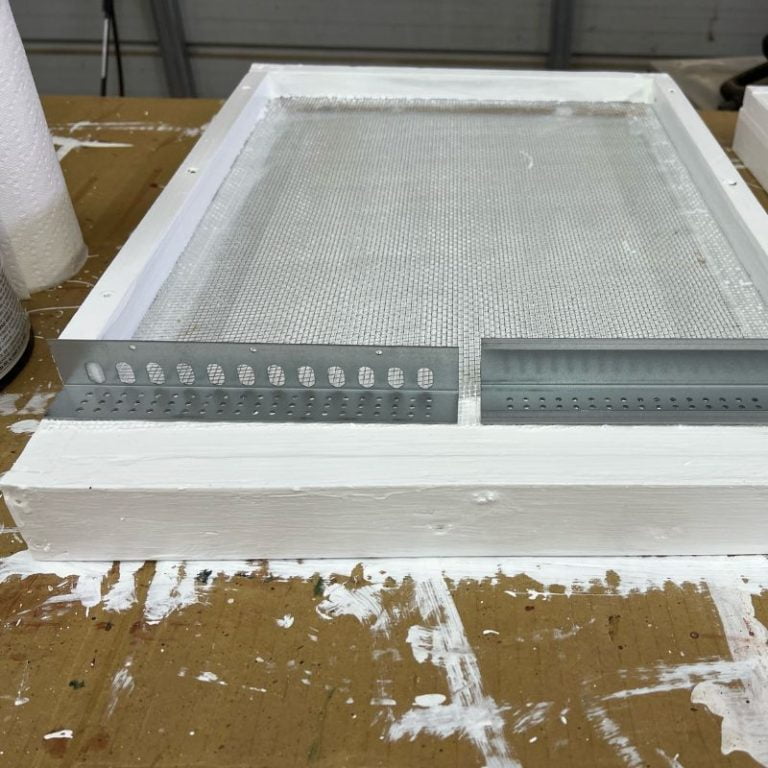
One thing we ran into when making our own equipment as a new beekeeper was we were making judgment calls that we thought wouldn’t make a difference. But what ended up happening is we made equipment just a little different because it was easier, and we didn’t think it mattered. But eventually, we realized our mistake as we started to use other pieces of equipment made for the standard design. So we had to go back and modify our original pieces to make them work.
A better option for beginner beekeepers is to buy equipment from a beekeeping supply company. I know that seems like in-authentic advice from a beekeeping equipment supplier, but we sell equipment because it is so difficult to make. For a beginner beekeeper, it’s better to spend your time learning about beekeeping than it is to build equipment. If you do want to build your own equipment, we can recommend this book on building beekeeping equipment for a good reference.

One thing we ran into when making our own equipment as a new beekeeper was we were making judgment calls that we thought wouldn’t make a difference. But what ended up happening is we made equipment just a little different because it was easier, and we didn’t think it mattered. But eventually, we realized our mistake as we started to use other pieces of equipment made for the standard design. So we had to go back and modify our original pieces to make them work.
A better option for beginner beekeepers is to buy equipment from a beekeeping supply company. I know that seems like in-authentic advice from a beekeeping equipment supplier, but we sell equipment because it is so difficult to make. For a beginner beekeeper, it’s better to spend your time learning about beekeeping than it is to build equipment. If you do want to build your own equipment, we can recommend this book on building beekeeping equipment for a good reference.
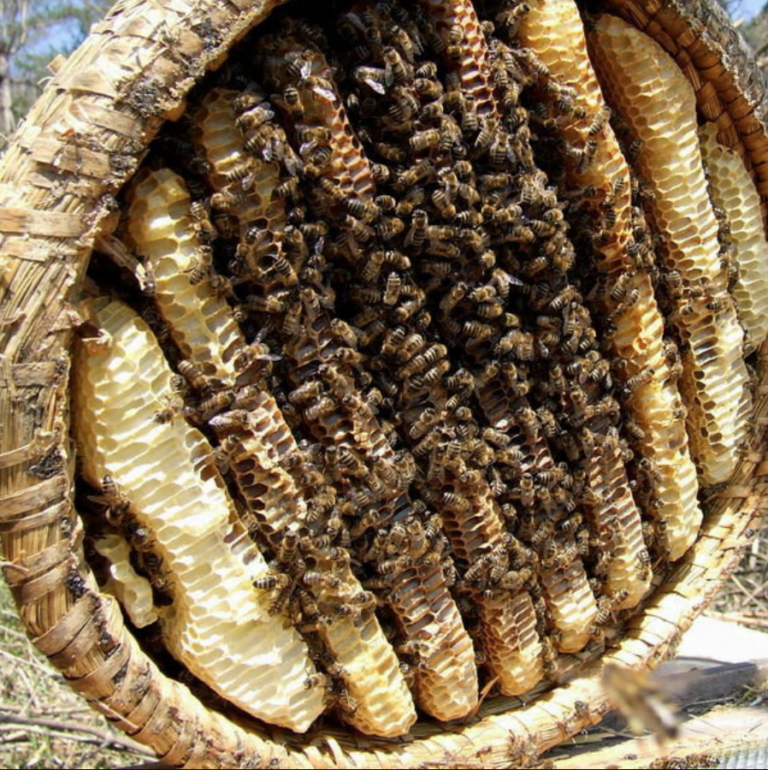
2) Using Non -Traditional Equipment
While we are talking about equipment, let’s mention using non-traditional equipment. When we talk about this, we are talking about Langstroth equipment vs. the other types. We don’t sell Langstroth-type equipment because it is the best; we sell it and use it because that is what most beekeepers use. It was designed for commercial beekeeping, and that doesn’t always make it best for backyard beekeepers. But that is just the system we use in the US.
We have used other types of hives before for several years, including Kenyan Top Bar Hives and Flow Hives. We have learned a lot using other types of hives, but we ultimately have stuck with Langstroth because it is just the standard hive in the United States.
We have customers come to the store and talk to us about other types of hives, and we are happy to help. We are happy to talk about them and provide some tips for using them. Beekeeping is tough, but when you start using hive styles that most people are not used to, it’s hard to find good help. And unfortunately, you start running into beekeepers who will make you feel dumb for using them. You shouldn’t feel dumb for using a non-standard hive, but it can make it harder in the short term.

2) Using Non -Traditional Equipment
While we are talking about equipment, let’s mention using non-traditional equipment. When we talk about this, we are talking about Langstroth equipment vs. the other types. We don’t sell Langstroth-type equipment because it is the best; we sell it and use it because that is what most beekeepers use. It was designed for commercial beekeeping, and that doesn’t always make it best for backyard beekeepers. But that is just the system we use in the US.
We have used other types of hives before for several years, including Kenyan Top Bar Hives and Flow Hives. We have learned a lot using other types of hives, but we ultimately have stuck with Langstroth because it is just the standard hive in the United States.
We have customers come to the store and talk to us about other types of hives, and we are happy to help. We are happy to talk about them and provide some tips for using them. Beekeeping is tough, but when you start using hive styles that most people are not used to, it’s hard to find good help. And unfortunately, you start running into beekeepers who will make you feel dumb for using them. You shouldn’t feel dumb for using a non-standard hive, but it can make it harder in the short term.
The hardest part of using non-standard hives is sourcing the frames. If you want to use a non-standard hive like a Horizontal Langstroth Hive, that is much easier because it uses standard Langstroth frames. When you have to build your own frames or special order frames like in a Layens, Top Bar or Slovenian hive, it makes it tough. Those hives are great, but the lack of support makes it harder for the beginner beekeeper.
Instead of starting with one of the alternative hives, if you can, it would be better to start with a Langstroth hive. It’s not possible for everyone, but using the same hive that others use makes it easier to be successful and allows you to learn the more basic skills like hive inspections and bee biology easily.
The hardest part of using non-standard hives is sourcing the frames. If you want to use a non-standard hive like a Horizontal Langstroth Hive, that is much easier because it uses standard Langstroth frames. When you have to build your own frames or special order frames like in a Layens, Top Bar or Slovenian hive, it makes it tough. Those hives are great, but the lack of support makes it harder for the beginner beekeeper.
Instead of starting with one of the alternative hives, if you can, it would be better to start with a Langstroth hive. It’s not possible for everyone, but using the same hive that others use makes it easier to be successful and allows you to learn the more basic skills like hive inspections and bee biology easily.
3) Keeping Bees Based Only On Your Own Opinion
3) Keeping Bees Based Only On Your Own Opinion
Beekeeping by yourself can be very difficult as there are many benefits of meeting other beekeepers in your area. Working with other beekeepers doesn’t always mean they need to suit you, but you can chat about what beekeeping is like in your area. Beekeeping is very local, and how a hive is managed will even change from different parts of the state.
The first year of beekeeping is the hardest, and there are a lot of misconceptions when taking care of bees. Sometimes our expectations don’t always match reality. And having someone nearby to help you know what to expect with your hives will make you a better beekeeper.
For example, in some parts of the US, it is necessary to leave your colony of bees with more honey in the hive for winter. This local knowledge can help you choose the right equipment and prevent your bees from starving in the winter. Also, knowing this information can help you know how much honey to harvest from the hive. You don’t want to harvest too much honey, and you want to take the excess honey.
The best way to contact your local beekeeping community is through your local beekeeping club. Nearly all of the populous counties and some of the rural counties have a beekeeping club that meets monthly. Most of the beekeeping club meetings we have been to are organized the same and are welcoming to new visitors. Most states also have a state-wide beekeeping meeting as well.
Having a beekeeping community helps keep your hair-brained ideas from going too far. I’m talking to myself here.
Beekeeping by yourself can be very difficult as there are many benefits of meeting other beekeepers in your area. Working with other beekeepers doesn’t always mean they need to suit you, but you can chat about what beekeeping is like in your area. Beekeeping is very local, and how a hive is managed will even change from different parts of the state.
The first year of beekeeping is the hardest, and there are a lot of misconceptions when taking care of bees. Sometimes our expectations don’t always match reality. And having someone nearby to help you know what to expect with your hives will make you a better beekeeper.
For example, in some parts of the US, it is necessary to leave your colony of bees with more honey in the hive for winter. This local knowledge can help you choose the right equipment and prevent your bees from starving in the winter. Also, knowing this information can help you know how much honey to harvest from the hive. You don’t want to harvest too much honey, and you want to take the excess honey.
The best way to contact your local beekeeping community is through your local beekeeping club. Nearly all of the populous counties and some of the rural counties have a beekeeping club that meets monthly. Most of the beekeeping club meetings we have been to are organized the same and are welcoming to new visitors. Most states also have a state-wide beekeeping meeting as well.
Having a beekeeping community helps keep your hair-brained ideas from going too far. I’m talking to myself here.
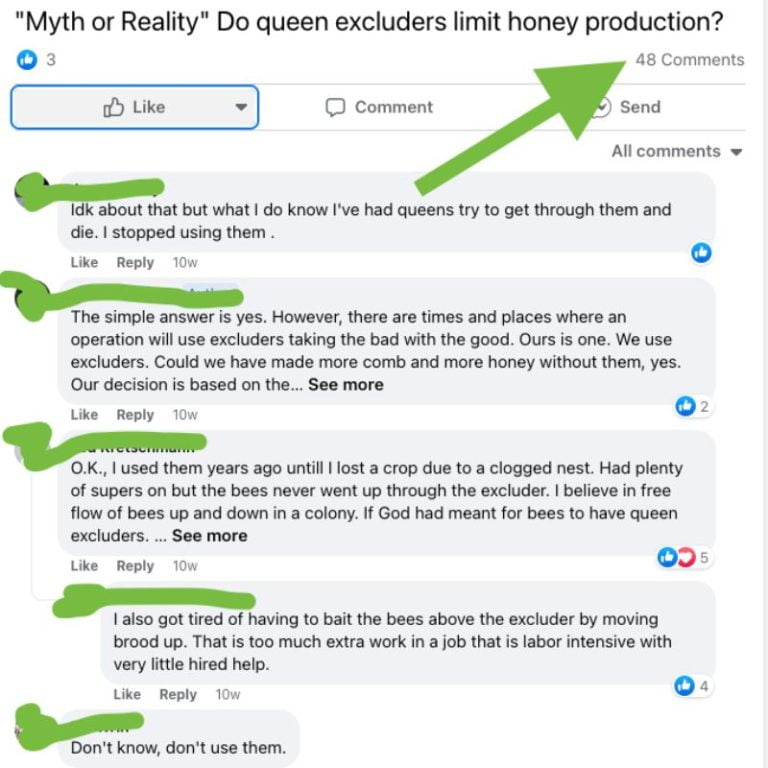
4) Trying To Incorporate Every Beekeepers Opinion
This is a tough one because it is extremely helpful to have input from local beekeepers. When we first went to a beekeeping club meeting, we thought that everyone at the meeting was an expert and we were the only new beekeepers there. It turns out that most of the people at the meeting had only kept bees for 0-3 years. A few people were leading the meeting who kept bees longer, and those were the ones that offered the best advice. Unfortunately, the ones that like to share their opinion the most are the ones that have kept bees for 1-2 years. They aren’t experts but do like to share their opinion.

4) Trying To Incorporate Every Beekeepers Opinion
This is a tough one because it is extremely helpful to have input from local beekeepers. When we first went to a beekeeping club meeting, we thought that everyone at the meeting was an expert and we were the only new beekeepers there. It turns out that most of the people at the meeting had only kept bees for 0-3 years. A few people were leading the meeting who kept bees longer, and those were the ones that offered the best advice. Unfortunately, the ones that like to share their opinion the most are the ones that have kept bees for 1-2 years. They aren’t experts but do like to share their opinion.
Too many opinions can make decision-making difficult. When customers come into our store, we don’t tell them what we think they should do. There are many options in beekeeping, and picking what works best for you is the best choice. We work to lead people in a direction where they will be successful, but there are certain things in beekeeping that are unique to your situation.
Facebook pages and beekeeping forums are incredibly helpful, but they are full of beekeepers who seem too eager to ridicule, confuse and complicate any question you may have about beekeeping. Seasoned beekeepers can be extremely helpful, but the seasoned beekeepers who you would want help from are usually not on Facebook or forums offering their opinion.
It’s hard to communicate online, and there are a lot of situations in beekeeping that aren’t as they seem. Usually, when questions are posed online, some important details are left out by accident. Not on purpose, but you don’t know what you don’t know. This is when a one-on-one conversation with a local beekeeper helps a lot. There you have the chance to talk through the options rather than just being told what you should do or what you did wrong.
We became better beekeepers when we realized everyone keeps bees differently based on their situation. If your hives are 20 miles away, you may use a different feeder than if your hives are in your backyard. Suppose you want to manage two colonies for pollination; then, you may be less concerned about harvesting honey and could use different equipment. It’s good to ask for help from others, but take it with two grains of salt.
Too many opinions can make decision-making difficult. When customers come into our store, we don’t tell them what we think they should do. There are many options in beekeeping, and picking what works best for you is the best choice. We work to lead people in a direction where they will be successful, but there are certain things in beekeeping that are unique to your situation.
Facebook pages and beekeeping forums are incredibly helpful, but they are full of beekeepers who seem too eager to ridicule, confuse and complicate any question you may have about beekeeping. Seasoned beekeepers can be extremely helpful, but the seasoned beekeepers who you would want help from are usually not on Facebook or forums offering their opinion.
It’s hard to communicate online, and there are a lot of situations in beekeeping that aren’t as they seem. Usually, when questions are posed online, some important details are left out by accident. Not on purpose, but you don’t know what you don’t know. This is when a one-on-one conversation with a local beekeeper helps a lot. There you have the chance to talk through the options rather than just being told what you should do or what you did wrong.
We became better beekeepers when we realized everyone keeps bees differently based on their situation. If your hives are 20 miles away, you may use a different feeder than if your hives are in your backyard. Suppose you want to manage two colonies for pollination; then, you may be less concerned about harvesting honey and could use different equipment. It’s good to ask for help from others, but take it with two grains of salt.
5) Not Doing The Research First
5) Not Doing The Research First
There is no real teacher in beekeeping like opening an established hive and looking through frames. There is so much you can learn from opening a hive up, and if you have the opportunity to do so, you should take it. This isn’t always possible, so you have to resort to learning other ways. Usually, most beekeepers decide they want to get into it later in the year. And because it is harder to start a colony in the fall or winter, they typically spend the winter learning about it before spring comes.
See our Master Guide Series on Beekeeping.
This is a great timeline for getting started. The only thing better would be if you could open a hive during the warmer months and then take the winter to prepare. No matter how you do your research, doing something will make you a better beekeeper. We struggle with customers who come by the store and don’t know anything about bees but want to get everything they need to start beekeeping that day, including the bees. That is a recipe for disaster, so we always do our best to help prepare those beekeepers for success.
There is no real teacher in beekeeping like opening an established hive and looking through frames. There is so much you can learn from opening a hive up, and if you have the opportunity to do so, you should take it. This isn’t always possible, so you have to resort to learning other ways. Usually, most beekeepers decide they want to get into it later in the year. And because it is harder to start a colony in the fall or winter, they typically spend the winter learning about it before spring comes.
See our Master Guide Series on Beekeeping.
This is a great timeline for getting started. The only thing better would be if you could open a hive during the warmer months and then take the winter to prepare. No matter how you do your research, doing something will make you a better beekeeper. We struggle with customers who come by the store and don’t know anything about bees but want to get everything they need to start beekeeping that day, including the bees. That is a recipe for disaster, so we always do our best to help prepare those beekeepers for success.
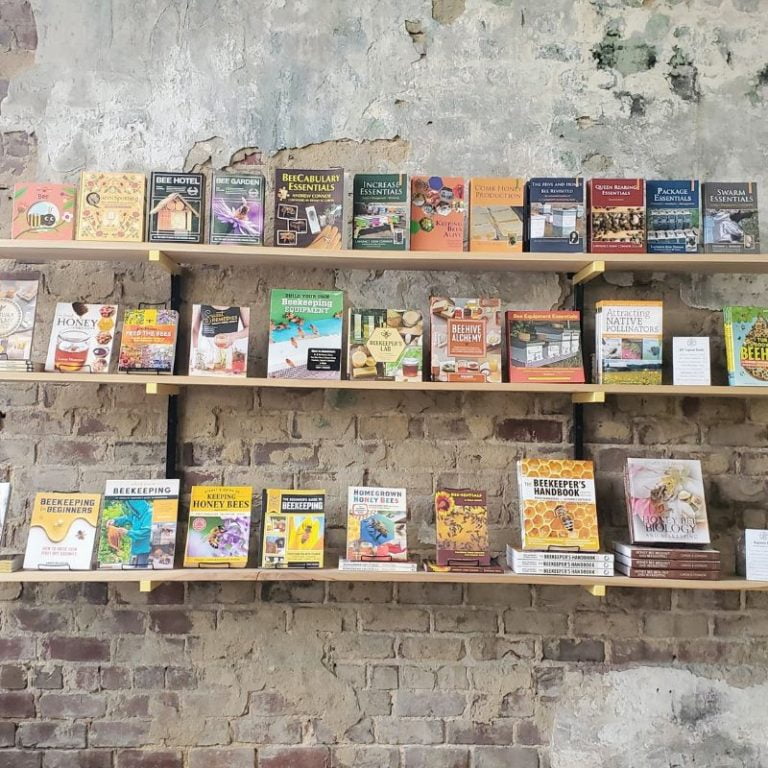
Beginner Beekeeping Books
Fortunately, there are a lot of great beginner beekeeping books to look at. Most of them cover the same content and, say, 80% of the same thing. But they are still incredibly helpful. This is our favorite beginner beekeeping book as it is written by a credible author, has great pictures, and has been updated.
Not preparing well for beekeeping makes your first year so much more difficult. Even when you are prepared and have read books, taken a beekeeping class, and attended local meetings, it can still be tough. Getting into bees with limited knowledge of beekeeping is how everyone starts with their bees. But your bee-keeping hobby will be off to a good start if you can educate yourself about the basics before getting your first colony of bees.

Beginner Beekeeping Books
Fortunately, there are a lot of great beginner beekeeping books to look at. Most of them cover the same content and, say, 80% of the same thing. But they are still incredibly helpful. This is our favorite beginner beekeeping book as it is written by a credible author, has great pictures, and has been updated.
Not preparing well for beekeeping makes your first year so much more difficult. Even when you are prepared and have read books, taken a beekeeping class, and attended local meetings, it can still be tough. Getting into bees with limited knowledge of beekeeping is how everyone starts with their bees. But your bee-keeping hobby will be off to a good start if you can educate yourself about the basics before getting your first colony of bees.
6) Not Understanding Frames
6) Not Understanding Frames
The frames in the hive are integral to beekeeping and are what make it possible for beekeepers to manage their hives with minimal interruptions. This is one of the more common mistakes new beekeepers make when getting started. It’s understandable as there is a lot of nuance to beekeeping frames.
The frames in the hive are integral to beekeeping and are what make it possible for beekeepers to manage their hives with minimal interruptions. This is one of the more common mistakes new beekeepers make when getting started. It’s understandable as there is a lot of nuance to beekeeping frames.
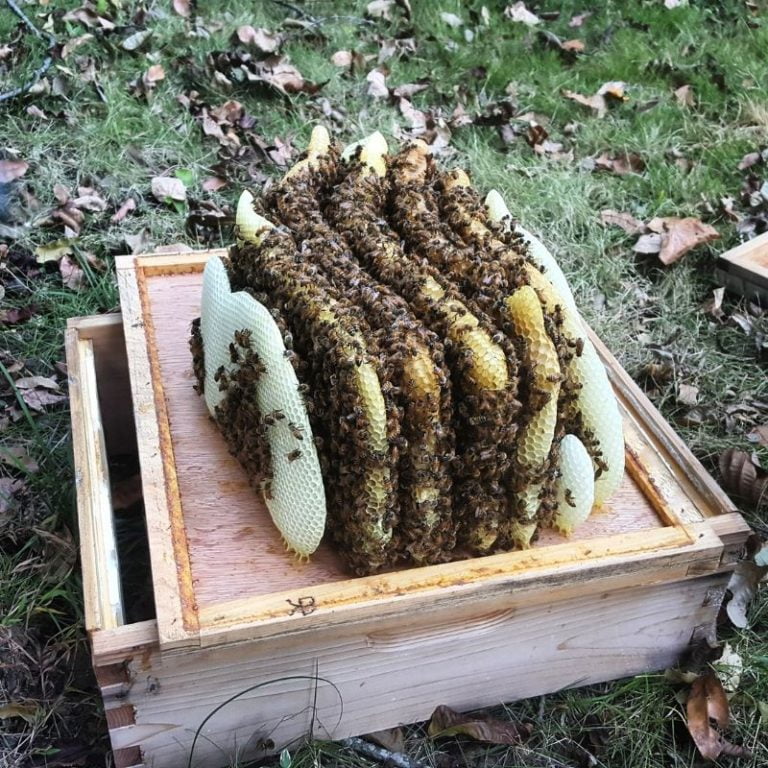
9 Frames In A 10-Frame Box
Some tools allow beekeepers to more evenly space their frames out in a hive. The frames are built to naturally space themselves according to how the bees work. We commonly see beekeepers have trouble with having all 10 frames in a 10-frame box or all 8 frames in an 8-frame box. It is a tight fit, especially after the bees have built their comb and propolis. It can make it harder to remove frames, and beekeepers like the idea of having fewer frames in a box, so there is less of a chance of damaging bees.
What ends up happening is the bees will start to fill the extra gap between the frames with crooked comb or burr comb. This comb then makes it even harder to remove the frames without damaging the bees.

9 Frames In A 10-Frame Box
Some tools allow beekeepers to more evenly space their frames out in a hive. The frames are built to naturally space themselves according to how the bees work. We commonly see beekeepers have trouble with having all 10 frames in a 10-frame box or all 8 frames in an 8-frame box. It is a tight fit, especially after the bees have built their comb and propolis. It can make it harder to remove frames, and beekeepers like the idea of having fewer frames in a box, so there is less of a chance of damaging bees.
What ends up happening is the bees will start to fill the extra gap between the frames with crooked comb or burr comb. This comb then makes it even harder to remove the frames without damaging the bees.
One place where fewer frames in the box is an advantage is in boxes dedicated to honey production. When using one less frame in the box than the box is designed for, the bees will store more honey than if all the frames were in the box. The bees will draw the comb out thicker in a honey box. They don’t do this in a box where the queen is laying eggs, so they end up making crooked comb when using this technique in that box.
One place where fewer frames in the box is an advantage is in boxes dedicated to honey production. When using one less frame in the box than the box is designed for, the bees will store more honey than if all the frames were in the box. The bees will draw the comb out thicker in a honey box. They don’t do this in a box where the queen is laying eggs, so they end up making crooked comb when using this technique in that box.
Not Pushing Frames Together
Not Pushing Frames Together
When a new beekeeper first gets their hive, there is always a little bit of slack with the brand-new frames in a brand-new box. The frames can shift around in the box about 1/2 inch or more. Over time, this extra space is taken up as the bees gum up the box and frames with propolise. This is why beekeepers tend to want to change it to a 9-frame box.
When starting with this new equipment, bees are apt to make comb in some of the wrong spaces. Bees prefer to build their comb in an empty void before they build on the frame. So if the beekeeper doesn’t push the frames towards the middle of the hive, there may be a gap that the bees start building comb in. When bees build the comb in the “wrong” place, it makes it harder for the beekeeper.
It would be better to push the frames towards the middle of the box and leave the gaps between the first frame and the box and the last frame in the box. Bees naturally work in the middle of a box, so the edges of the box are the last place they will typically build a comb.
What’s worse than this is leaving any frames out of the hive altogether. Don’t do this.
When a new beekeeper first gets their hive, there is always a little bit of slack with the brand-new frames in a brand-new box. The frames can shift around in the box about 1/2 inch or more. Over time, this extra space is taken up as the bees gum up the box and frames with propolise. This is why beekeepers tend to want to change it to a 9-frame box.
When starting with this new equipment, bees are apt to make comb in some of the wrong spaces. Bees prefer to build their comb in an empty void before they build on the frame. So if the beekeeper doesn’t push the frames towards the middle of the hive, there may be a gap that the bees start building comb in. When bees build the comb in the “wrong” place, it makes it harder for the beekeeper.
It would be better to push the frames towards the middle of the box and leave the gaps between the first frame and the box and the last frame in the box. Bees naturally work in the middle of a box, so the edges of the box are the last place they will typically build a comb.
What’s worse than this is leaving any frames out of the hive altogether. Don’t do this.
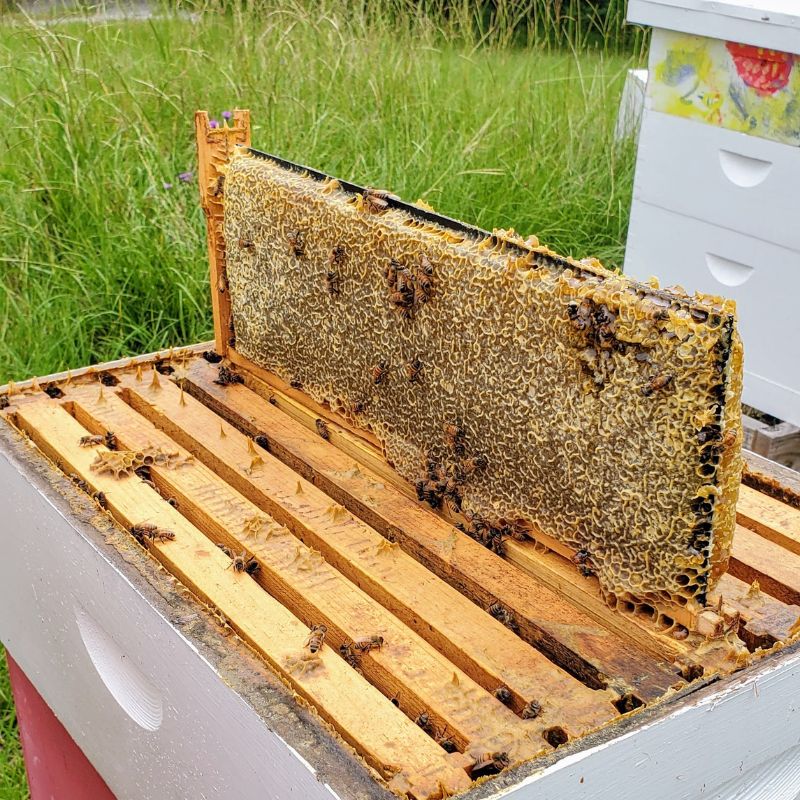
Building Frames Without Glue
This one is a killer and is one of the more frustrating events that can happen working with your bees. A poorly built box or a frame that is assembled without glue or without the proper nails or staples will cause problems later. What may look strong and well made when new, can be quickly stressed when bees start working in. Weather and bees can take their toll on beekeeping equipment.
If I had to choose to use staples/nails or glue, I would choose to use glue every time. Glue is so much stronger than a single staple or nail at holding a joint together.
This is the glue we use for beehives and frames.

Building Frames Without Glue
This one is a killer and is one of the more frustrating events that can happen working with your bees. A poorly built box or a frame that is assembled without glue or without the proper nails or staples will cause problems later. What may look strong and well made when new, can be quickly stressed when bees start working in. Weather and bees can take their toll on beekeeping equipment.
If I had to choose to use staples/nails or glue, I would choose to use glue every time. Glue is so much stronger than a single staple or nail at holding a joint together.
This is the glue we use for beehives and frames.
The strength of the propolis made by the bees is remarkable. It is very common for a frame that is poorly assembled to fall apart inside the hive when a beekeeper attempts to remove it. It’s very tough to remove a frame stuck inside the hive, and the top bar has ripped off because the nails weren’t strong enough. The same thing happens with boxes over time. We have helped beekeepers with a ratchet strap around their boxes to keep them from splitting open because the joints weren’t holding together.
Glue is cheap insurance and will be strong than nails or staples, and will last the life of the equipment.
The strength of the propolis made by the bees is remarkable. It is very common for a frame that is poorly assembled to fall apart inside the hive when a beekeeper attempts to remove it. It’s very tough to remove a frame stuck inside the hive, and the top bar has ripped off because the nails weren’t strong enough. The same thing happens with boxes over time. We have helped beekeepers with a ratchet strap around their boxes to keep them from splitting open because the joints weren’t holding together.
Glue is cheap insurance and will be strong than nails or staples, and will last the life of the equipment.
7) Assuming The Colony Is Doing Well
7) Assuming The Colony Is Doing Well
Bees are intimidating; we understand that. And especially so when you are getting started and with your first hive. Experienced beekeepers become experienced through trial and error. Through failures, good beekeepers become good, and only through experience will you be able to judge the potential health of a colony from looking at the outside of the hive. This is a skill that can’t be taught by anyone or learned from a book. It takes time and experience to learn.
Because opening a hive full of stinging is hard, the temptation is to look at the outside, see bee traffic at the entrance, and assume all is well. The only bees you can see at the entrance are the worker bees. From the outside, it is difficult to tell if the queen is laying eggs, is the larva, eggs, and pupa are healthy or if there are pests inside the hive causing trouble.
Bees are intimidating; we understand that. And especially so when you are getting started and with your first hive. Experienced beekeepers become experienced through trial and error. Through failures, good beekeepers become good, and only through experience will you be able to judge the potential health of a colony from looking at the outside of the hive. This is a skill that can’t be taught by anyone or learned from a book. It takes time and experience to learn.
Because opening a hive full of stinging is hard, the temptation is to look at the outside, see bee traffic at the entrance, and assume all is well. The only bees you can see at the entrance are the worker bees. From the outside, it is difficult to tell if the queen is laying eggs, is the larva, eggs, and pupa are healthy or if there are pests inside the hive causing trouble.
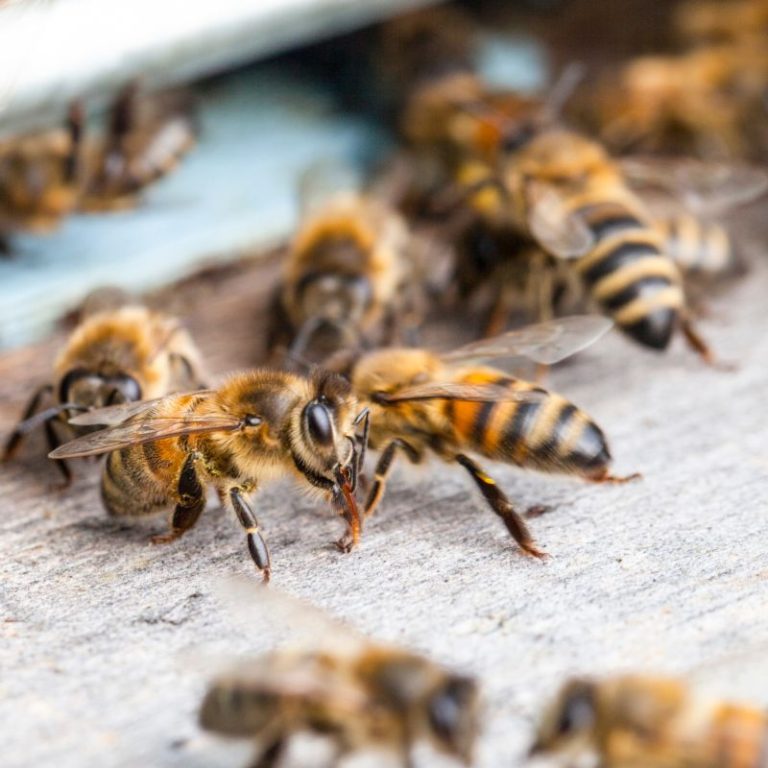
Hive Inspections Every 7-14 Days
As a beginner, you don’t have to have a full understanding of everything that could happen inside the hive. The benefit of looking inside the colony every 7-14 days is you can start to notice the changes. You may not know exactly what is happening inside the hive, but if something changes from one month to the next, you’ll notice it. And if everything is progressing normally and then the population drops, you’ll know that something has changed, and it will cause you to ask questions.
Usually, when a hive has issues, it is not detectable from the outside until it is too late. Small problems are much easier to fix, so not noticing the problem until its too late isn’t a good plan.

Hive Inspections Every 7-14 Days
As a beginner, you don’t have to have a full understanding of everything that could happen inside the hive. The benefit of looking inside the colony every 7-14 days is you can start to notice the changes. You may not know exactly what is happening inside the hive, but if something changes from one month to the next, you’ll notice it. And if everything is progressing normally and then the population drops, you’ll know that something has changed, and it will cause you to ask questions.
Usually, when a hive has issues, it is not detectable from the outside until it is too late. Small problems are much easier to fix, so not noticing the problem until its too late isn’t a good plan.
8) Not Knowing Bee Biology
8) Not Knowing Bee Biology
You don’t have to have a biology degree to understand the basics of bees. Having a basic understanding of the biology of bees will help you be a better beekeeper. Beekeeping is a unique hobby where you have the opportunity to see the inner workings of a colony of bees, and the more you understand how it works, the more successful you will be.
You don’t have to have a biology degree to understand the basics of bees. Having a basic understanding of the biology of bees will help you be a better beekeeper. Beekeeping is a unique hobby where you have the opportunity to see the inner workings of a colony of bees, and the more you understand how it works, the more successful you will be.
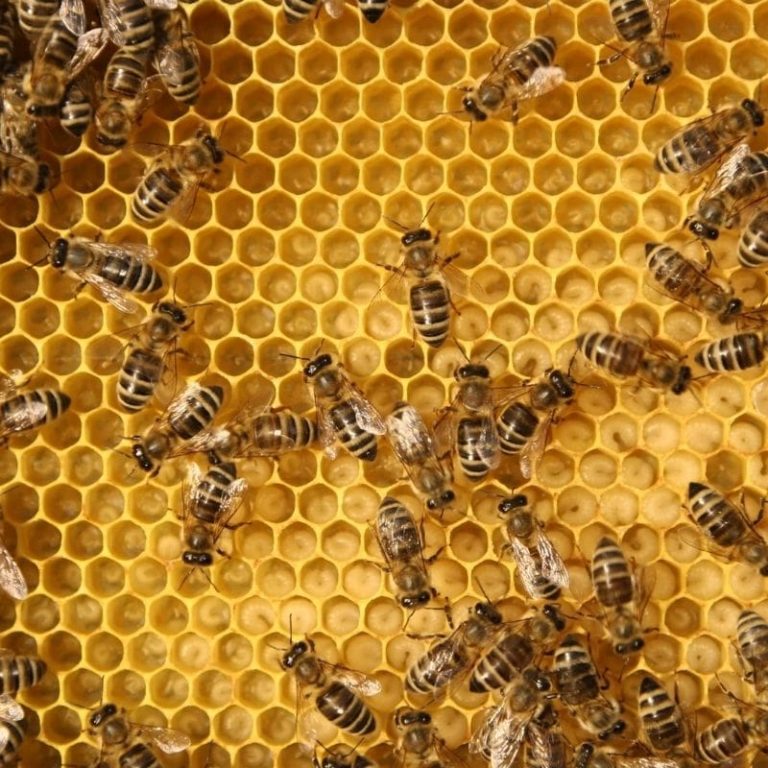
Bee Biology Inside The Hive
The pattern of a bee is very predictable. Queen lays egg > egg turns into larva > larva is fed by workers > larva turns into a pupa > pupa hatches out as a worker bee > worker bee progresses through their responsibilities until it dies. This process is repeated thousands of times a week, and understanding the pattern and identifying the stages will help you and your bees. When a beekeeper doesn’t learn basic biology, it’s like beekeeping with an arm behind your back. Every beginner beekeeper book goes through bee biology for a good reason.

Bee Biology Inside The Hive
The pattern of a bee is very predictable. Queen lays egg > egg turns into larva > larva is fed by workers > larva turns into a pupa > pupa hatches out as a worker bee > worker bee progresses through their responsibilities until it dies. This process is repeated thousands of times a week, and understanding the pattern and identifying the stages will help you and your bees. When a beekeeper doesn’t learn basic biology, it’s like beekeeping with an arm behind your back. Every beginner beekeeper book goes through bee biology for a good reason.
Bee Biology And The Seasons
Bee Biology And The Seasons
How the bee biology inside the hive is important, it interacts with the environment. While bee biology is the same nearly year-round, the rate at which the colony grows and declines is based on the seasons. Honey bees take their cues from the environment, so understanding the relationship between bee biology, weather, and the seasons is key to becoming an experienced beekeeper.
How the bee biology inside the hive is important, it interacts with the environment. While bee biology is the same nearly year-round, the rate at which the colony grows and declines is based on the seasons. Honey bees take their cues from the environment, so understanding the relationship between bee biology, weather, and the seasons is key to becoming an experienced beekeeper.
Feeding Bees And Biology
Feeding Bees And Biology
Feeding bees sugar water and pollen patties has a direct impact on the biology of the colony. It is a way that beekeepers can cause or prevent something from happening to their colony. Understanding how food interacts with the bees will help you to use feeding as a tool. No beekeeper wants to feed their bees sugar syrup or protein patties, but it is better than allowing the bees to starve. Beekeepers feed not because they want to but because they have to. Feeding bees is one of the best tools beekeepers have to give them the resources to build comb, raise bees and store enough honey for winter.
Feeding bees sugar water and pollen patties has a direct impact on the biology of the colony. It is a way that beekeepers can cause or prevent something from happening to their colony. Understanding how food interacts with the bees will help you to use feeding as a tool. No beekeeper wants to feed their bees sugar syrup or protein patties, but it is better than allowing the bees to starve. Beekeepers feed not because they want to but because they have to. Feeding bees is one of the best tools beekeepers have to give them the resources to build comb, raise bees and store enough honey for winter.
Beekeeping Pests And Biology
Beekeeping Pests And Biology
This is a huge deal in beekeeping; pests are a constant problem for bees and their beekeeper. We can’t dive too much into this topic, but there is a direct correlation between colony health and pressure from pests. There are times when the stronger the colony, the stronger the pests. And with other pests, the strong the colony, the weaker the pests. So understanding the biology of the bees, you can know how better to deal with pests.
This is a huge deal in beekeeping; pests are a constant problem for bees and their beekeeper. We can’t dive too much into this topic, but there is a direct correlation between colony health and pressure from pests. There are times when the stronger the colony, the stronger the pests. And with other pests, the strong the colony, the weaker the pests. So understanding the biology of the bees, you can know how better to deal with pests.
9) Using The Wrong Terminology
9) Using The Wrong Terminology
When we started keeping bees, the terminology and jargon used by beekeepers were tough to keep track of. There were so many words used that weren’t a part of normal language, but beekeepers throw them out left and right, and it completely goes over a new beekeeper’s head. We understand this so we try not to use a lot of jargon when talking about bees.
But some basic terms will help you be a better beekeeper. This comes into play when you are asking questions or hearing answers to another person’s questions. Understanding what a super is or what a brood box is will help you out. It honestly makes the biggest difference when somebody is trying to help you. If you know the terms to use, you can keep up with their explanation.
When we started keeping bees, the terminology and jargon used by beekeepers were tough to keep track of. There were so many words used that weren’t a part of normal language, but beekeepers throw them out left and right, and it completely goes over a new beekeeper’s head. We understand this so we try not to use a lot of jargon when talking about bees.
But some basic terms will help you be a better beekeeper. This comes into play when you are asking questions or hearing answers to another person’s questions. Understanding what a super is or what a brood box is will help you out. It honestly makes the biggest difference when somebody is trying to help you. If you know the terms to use, you can keep up with their explanation.
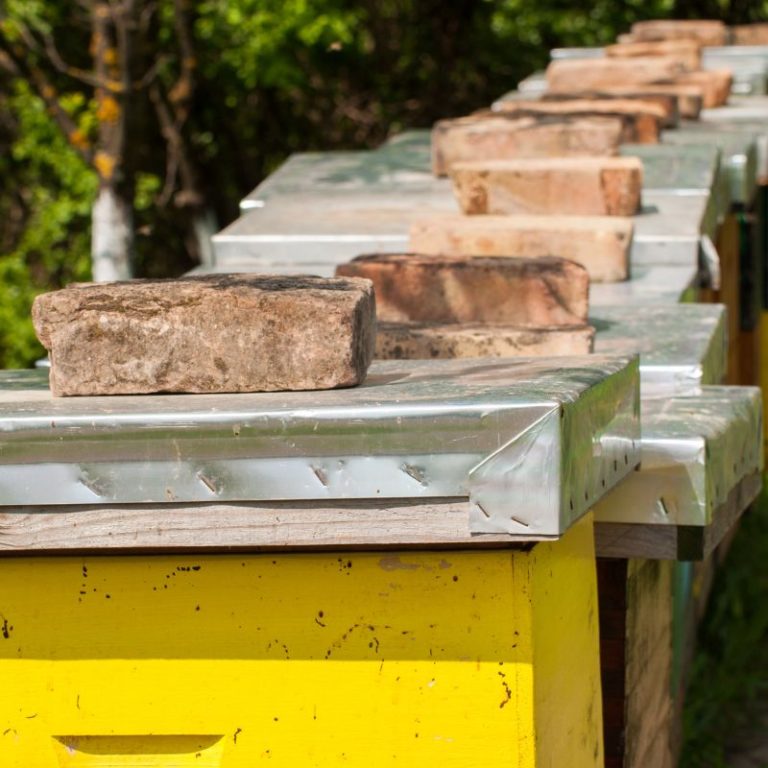
10) Working Their Beekeeping Goals Too Quickly
When you walk into a bee yard belonging to an experienced beekeeper, you can be inspired by all the bee activity and organization of the apiary. Talking with experienced beekeepers can start to get your wheels turning and make you think about all the things you can do with bees. Beekeeping is a unique hobby as you can make a profit from it. Besides making money from beekeeping, there are a lot of benefits to keeping bees.

10) Working Their Beekeeping Goals Too Quickly
When you walk into a bee yard belonging to an experienced beekeeper, you can be inspired by all the bee activity and organization of the apiary. Talking with experienced beekeepers can start to get your wheels turning and make you think about all the things you can do with bees. Beekeeping is a unique hobby as you can make a profit from it. Besides making money from beekeeping, there are a lot of benefits to keeping bees.
Some of the benefits of bees only come with expanding your apiary to a sustainable level. Most beekeepers start with two colonies in their backyard for a good reason. When you start small, you make small mistakes. Like when we talked about experienced beekeepers earlier, it takes plenty of time and mistakes to know what you are doing with bees.
If you want to sell nucleus hives, breed queens, sell lots of honey, or make your own beeswax candles, all of those things take money and bees to do. The first year of beekeeping is tough, and it usually takes about 3 years to handle how to be a beekeeper. Some people have had bees for 10 years and have never gotten it yet. We call those eternal beekeepers.
In beekeeping, it is better to crawl before you walk. And it’s easy to crawl when you have two hives, and it takes at least 3 years to start to grasp how to manage a colony of bees. And in addition to it taking the beekeeper time to learn to learn, it takes bees a couple of years to start building enough comb in the colony to produce significant amounts of honey. So don’t rush it.
Some of the benefits of bees only come with expanding your apiary to a sustainable level. Most beekeepers start with two colonies in their backyard for a good reason. When you start small, you make small mistakes. Like when we talked about experienced beekeepers earlier, it takes plenty of time and mistakes to know what you are doing with bees.
If you want to sell nucleus hives, breed queens, sell lots of honey, or make your own beeswax candles, all of those things take money and bees to do. The first year of beekeeping is tough, and it usually takes about 3 years to handle how to be a beekeeper. Some people have had bees for 10 years and have never gotten it yet. We call those eternal beekeepers.
In beekeeping, it is better to crawl before you walk. And it’s easy to crawl when you have two hives, and it takes at least 3 years to start to grasp how to manage a colony of bees. And in addition to it taking the beekeeper time to learn to learn, it takes bees a couple of years to start building enough comb in the colony to produce significant amounts of honey. So don’t rush it.
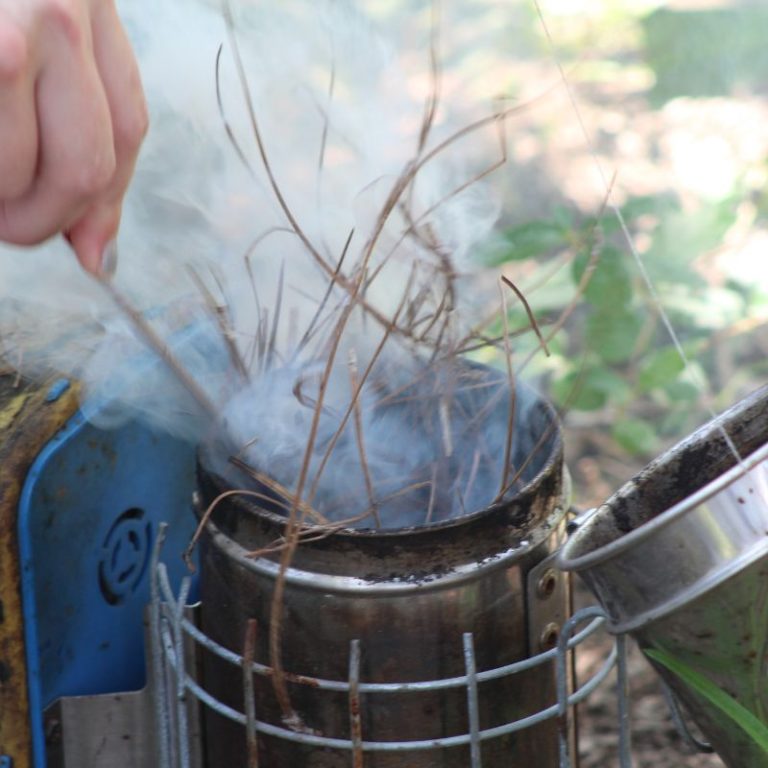
11) Not Learning To Use A Smoker Properly
There is nothing more beekeeperish than abeekeeping smoker. That classic shape is more identifiable than beekeeping in a bee suit, a hive tool, or a stack of white boxes. The only more recognizable thing is the hive hanging from a tree with bees flying around it. Ironically, that isn’t even a bee hive. Bees don’t build nests like that; wasps do.

11) Not Learning To Use A Smoker Properly
There is nothing more beekeeperish than abeekeeping smoker. That classic shape is more identifiable than beekeeping in a bee suit, a hive tool, or a stack of white boxes. The only more recognizable thing is the hive hanging from a tree with bees flying around it. Ironically, that isn’t even a bee hive. Bees don’t build nests like that; wasps do.
So the smoker is that classic beekeeper tool because every beekeeper uses one. Having a properly lit smoker makes a night and day difference in how bees respond. There are times that a beekeeper doesn’t need a smoker at all, but there are times it is essential. A smoker doesn’t hurt the bees and, when lit properly, blows cool smoke around the bees to keep the bees calm.
So the smoker is that classic beekeeper tool because every beekeeper uses one. Having a properly lit smoker makes a night and day difference in how bees respond. There are times that a beekeeper doesn’t need a smoker at all, but there are times it is essential. A smoker doesn’t hurt the bees and, when lit properly, blows cool smoke around the bees to keep the bees calm.
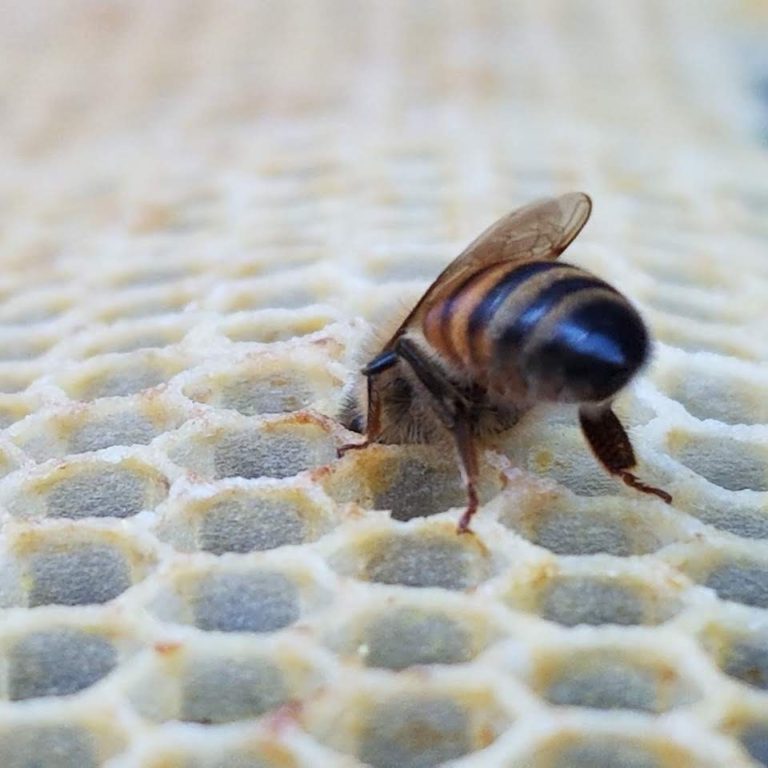
12) Assuming Bees Can Take Care Of Themselves
Honey bees are remarkable creatures and have lived for a very long time without the help of beekeepers. They still can do that today in some situations, but more often than not, a beekeeper can help them be more successful.
It’s also possible to do more harm than good with bees, and there is plenty of evidence to show how beekeepers do too much. One area where beekeepers can help their bees is nutrition. When I say nutrition, that doesn’t mean that all of the bee’s food needs to come from the beekeeper. That is actually not what beekeepers should do.
Read our blog all answering the questions, What Do Bees Eat?

12) Assuming Bees Can Take Care Of Themselves
Honey bees are remarkable creatures and have lived for a very long time without the help of beekeepers. They still can do that today in some situations, but more often than not, a beekeeper can help them be more successful.
It’s also possible to do more harm than good with bees, and there is plenty of evidence to show how beekeepers do too much. One area where beekeepers can help their bees is nutrition. When I say nutrition, that doesn’t mean that all of the bee’s food needs to come from the beekeeper. That is actually not what beekeepers should do.
Read our blog all answering the questions, What Do Bees Eat?
But there are times when it is helpful to feed bees sugar, pollen, or a pollen substitute. For example, when a colony is young and just getting started, they cannot go out and forage for all of the perfect food available to them in the environment. Even if plenty of flowers bloom, the small colony can’t send out enough bees to capitalize on the blooming flowers before they stop blooming.
A full size colony can send out enough foragers, but a small colony doesn’t have the foragers it needs.
Because of this, the beekeeper may feed them syrup to get their colony build up in their population faster than they can do on their own.
But there are times when it is helpful to feed bees sugar, pollen, or a pollen substitute. For example, when a colony is young and just getting started, they cannot go out and forage for all of the perfect food available to them in the environment. Even if plenty of flowers bloom, the small colony can’t send out enough bees to capitalize on the blooming flowers before they stop blooming.
A full size colony can send out enough foragers, but a small colony doesn’t have the foragers it needs.
Because of this, the beekeeper may feed them syrup to get their colony build up in their population faster than they can do on their own.

